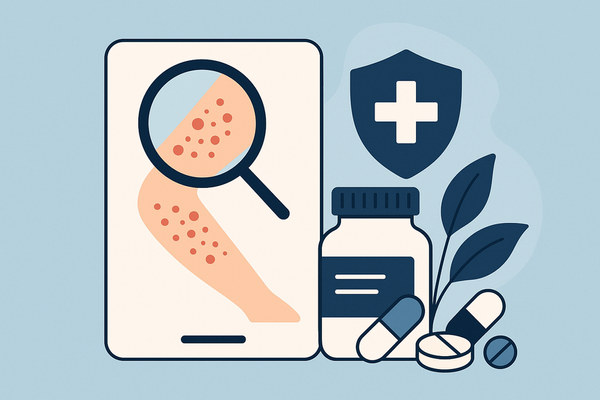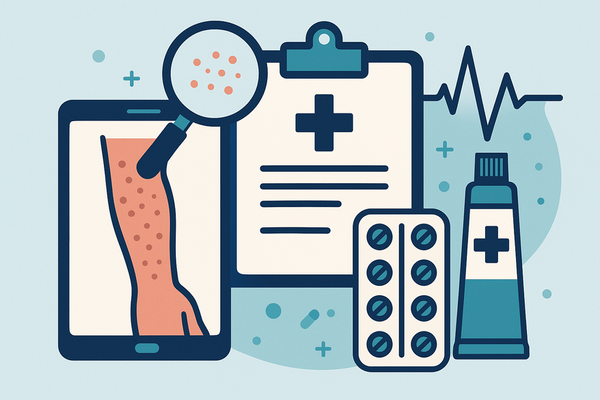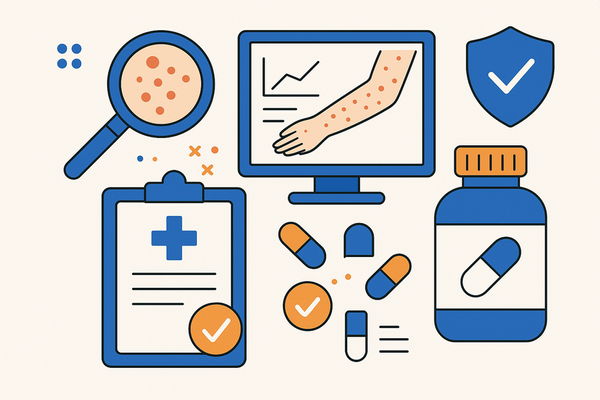Lupus Rash Treatment Options: A Comprehensive Guide to Managing Cutaneous Lupus
Explore lupus rash treatment options including medical therapies and home remedies to manage cutaneous lupus and improve your quality of life.
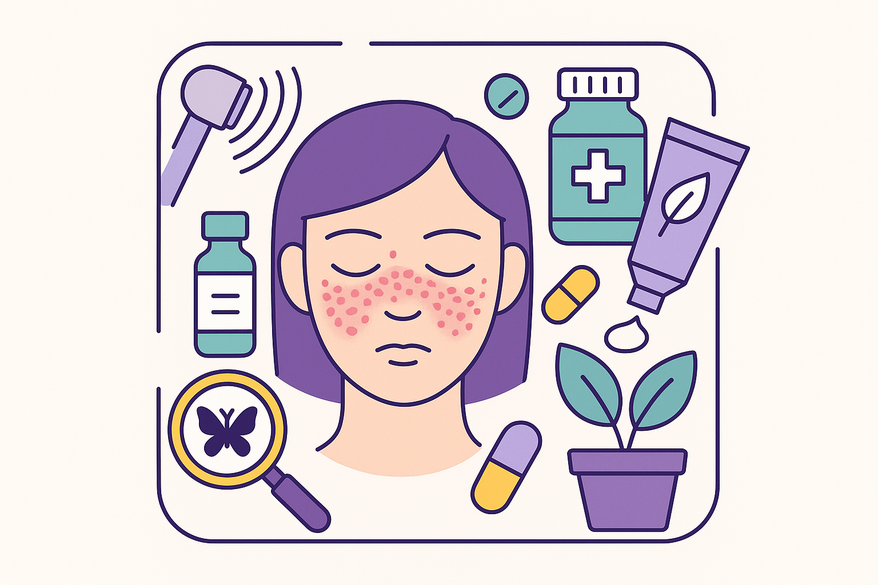
Estimated reading time: 10 minutes
Key Takeaways
- Lupus rashes manifest in various forms—malar (“butterfly”), discoid, subacute—and require early recognition to guide treatment.
- Strict sun protection and lifestyle measures are fundamental to preventing and minimizing flares.
- Treatment options range from topical corticosteroids and antimalarials to systemic immunosuppressants and emerging biologics.
- Personalized plans overseen by dermatologists and rheumatologists optimize outcomes while reducing side effects.
- Patient education, regular monitoring, and multidisciplinary care are key to long-term skin and overall lupus management.
Table of Contents
- Causes and Symptoms of Lupus Rashes
- Why Effective Management Matters
- Overview of Treatment Options
- Individualizing Treatment
- Expert Insights
- Managing Side Effects & Complications
- Conclusion & Next Steps
- Additional Resources & Support
- FAQ
Causes and Symptoms of Lupus Rashes
In cutaneous lupus, the immune system mistakenly attacks skin cells, leading to inflammation and visible lesions. Recognizing rash types and triggers helps you seek timely care.
Common Types of Lupus Rashes
- Butterfly (malar) rash
Flat, red patches across cheeks and nose, often triggered by sun or UV exposure. - Discoid lupus
Thick, circular, scaly lesions that may scar and cause permanent discoloration. - Subacute cutaneous lupus
Ring-shaped or scaly pink/red patches, usually non-itchy and triggered by sunlight. - Other manifestations
Photosensitive rashes on the trunk or arms; ulcers inside the mouth or nose.
Key Symptoms
- Burning or tingling in affected areas
- Variable itching—from mild to severe
- Rashes that flare and remit over time
- Scarring risk, especially with prolonged discoid lesions
Why This Matters
- Early recognition guides appropriate lupus rash treatment options.
- Photosensitivity demands strict sun protection.
- Timely intervention reduces scarring risk.
For a deeper look at early autoimmune rash signs, see our Comprehensive Guide to Autoimmune Rash Symptoms.
Why Effective Management Matters
Prompt, effective management of lupus rashes improves both physical comfort and emotional well-being.
Physical Comfort
- Reduces pain, itching, and burning.
- Prevents progression to thick or scarred lesions.
Emotional Well-Being
- Boosts confidence as visible rashes fade.
- Alleviates social anxiety and stigma.
Disease Control
- Skin flares often mirror internal inflammation.
- Early treatment can prevent systemic complications.
A balanced approach—medical therapies, topical treatments, and lifestyle changes—reduces discomfort and supports overall lupus control.
Overview of Treatment Options
Treatments are tailored to rash type, severity, and individual factors. Key options include:
- Medical Therapies
- Corticosteroids
Block inflammation. Available as topical creams, oral tablets, or injections. Taper doses to minimize withdrawal flares; monitor for weight gain and osteoporosis. - Antimalarials (e.g., Hydroxychloroquine)
Modulate immune response to reduce flares. Well-tolerated long term; requires annual eye exams to prevent retinal toxicity. - Immunosuppressants
For severe or refractory cases. Agents like methotrexate, azathioprine, and mycophenolate mofetil require regular blood and liver monitoring.
- Corticosteroids
- Topical Treatments
- Corticosteroid creams/ointments
Apply thinly to lesions once or twice daily; prolonged use can thin skin and cause stretch marks. - Calcineurin inhibitors
Tacrolimus or pimecrolimus block T-cell activation without thinning skin; ideal for facial or sensitive areas.
- Corticosteroid creams/ointments
- Lifestyle Modifications & Home Remedies
- Sun Protection
SPF 50+ sunscreen, UPF clothing, wide-brim hats, and avoidance of peak sun hours are essential. - Gentle Skincare
Fragrance-free, hypoallergenic products; pat skin dry and avoid harsh exfoliants. - Smoking Cessation
Smoking worsens flares and reduces medication efficacy.
- Sun Protection
- Emerging Treatments & Research
Biologics like belimumab are under study for cutaneous lupus. Novel topical immune modulators targeting cytokines show promise. Learn more on the Lupus Foundation of America research page and explore the AI Rash Detector App for AI-driven skin analysis.
Here’s a sample report from the Rash Detector app:
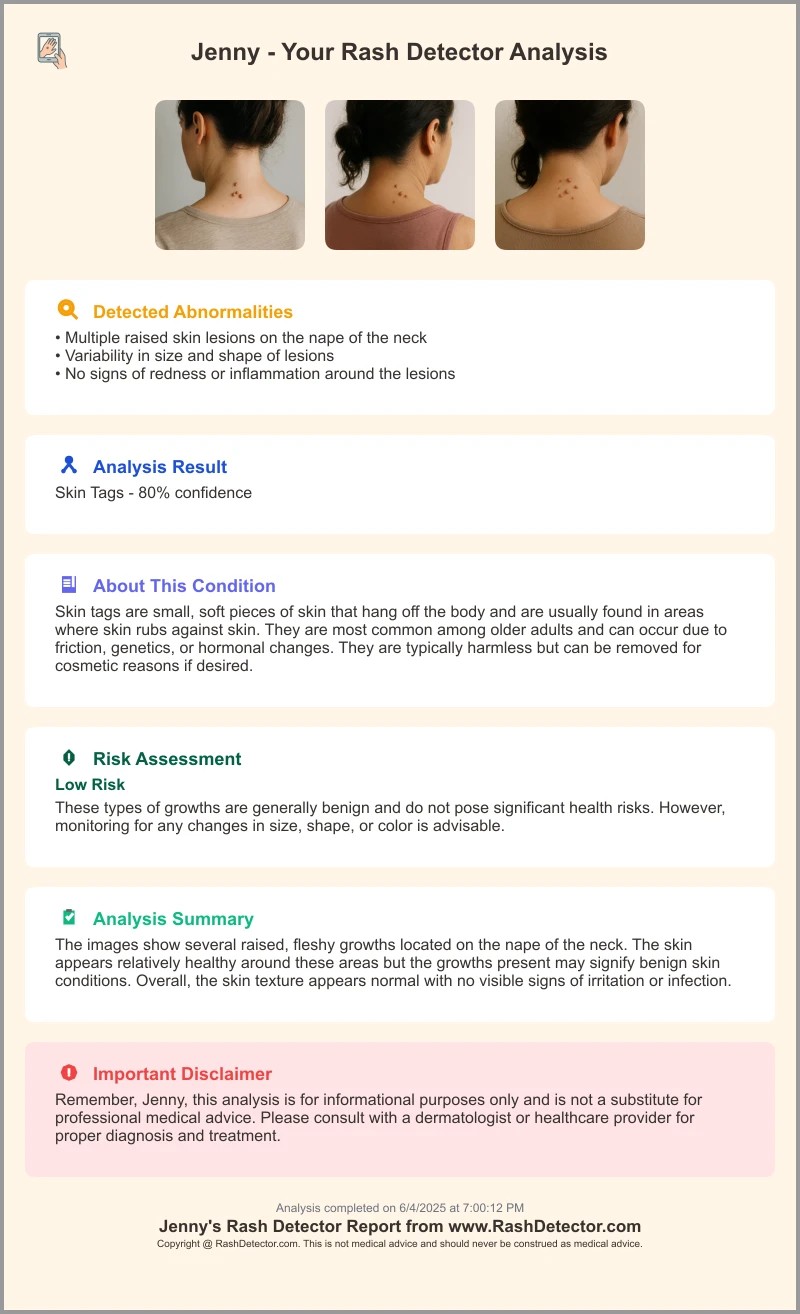
Individualizing Treatment
Every lupus rash is unique. A personalized plan considers:
- Severity and extent of lesions
- Rash subtype: malar, discoid, or subacute
- Comorbidities like kidney or joint involvement
- Previous treatment responses and tolerance
Multi-Disciplinary Approach
- Dermatologist: focuses on skin therapies and local side effects.
- Rheumatologist: oversees systemic control and immunosuppressive regimens.
Case 1: Mild malar rash treated with topical triamcinolone and strict sun protection—cleared in 10 days.
Case 2: Widespread subacute rash managed with hydroxychloroquine and a prednisone taper—resolved in 4 weeks.
Expert Insights
“Accurate subtype diagnosis and ongoing monitoring are essential to adjust treatments effectively,” says the American Academy of Dermatology.
“Early referral leads to faster control and fewer complications,” advises the NHS.
Key Takeaways
- Early intervention prevents scarring.
- Regular follow-up allows dose adjustments.
- Patient education boosts adherence to treatment plans.
Managing Side Effects & Complications
Awareness of potential risks ensures safer therapy:
Corticosteroids
- Topical use can thin skin and cause telangiectasia.
- Systemic use may lead to weight gain, hypertension, and osteoporosis.
- Mitigation: use the lowest effective dose and consider alternate-day regimens.
Antimalarials
- Retinal toxicity is rare but serious.
- Recommendation: baseline and annual ophthalmologic exams.
- Report vision changes or floaters immediately.
Immunosuppressants
- Increased infection risk; watch for fever or cough.
- Stay up to date on non-live vaccines.
- Regular CBC and liver function tests are mandatory.
Patient Tips
- Keep a treatment diary with photos and symptom notes.
- Avoid sun exposure consistently.
- Seek prompt care for signs of infection.
Conclusion & Next Steps
Combining medical therapies, topicals, lifestyle adjustments, and personalized care delivers the best outcomes for lupus rash management. Consult a dermatologist and rheumatologist early to build your targeted plan.
Additional Resources & Support
- Lupus Foundation of America – patient support and clinical trial info
- NIAMS (National Institute of Arthritis and Musculoskeletal and Skin Diseases) – disease overview
- American Academy of Dermatology – cutaneous lupus guidance
- NHS Lupus Information – diagnosis and management
- Local support groups and online forums – share experiences and coping tips
FAQ
- What causes lupus rashes?
Lupus rashes occur when the immune system attacks healthy skin cells, causing inflammation and lesion formation. - How can I protect my skin from lupus flares?
Use broad-spectrum SPF 50+ sunscreen, UPF clothing, wide-brim hats, and avoid peak sun hours to minimize photosensitive flares. - What medications treat lupus rashes?
Options include topical and systemic corticosteroids, antimalarials like hydroxychloroquine, immunosuppressants, and emerging biologics. - Are there side effects of lupus rash treatments?
Yes—long-term steroids can thin skin and cause systemic effects, antimalarials carry rare retinal risks, and immunosuppressants increase infection risk. - When should I see a specialist?
Seek care for persistent or worsening rashes, severe flares, or if over-the-counter measures fail to provide relief.


